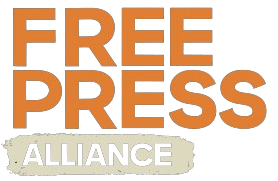Press evolves in different formats, nowadays, you can find journalism on social networks, websites, newspapers, and television. All share the same core objective: to inform people about what is happening in the world. To understand how press freedom has evolved in the last decade, we need to go back to the origins of the press.
A Brief Look at the Roots of Press Freedom
The idea of press freedom dates back centuries, rooted in the belief that people have the right to access information and express ideas without government interference. Milestones like the invention of the printing press in the 15th century and the establishment of legal protections in constitutions, such as the First Amendment in the United States, laid the foundation for modern journalism.
However, press freedom has never been static. It has always been shaped by the political, technological, and social dynamics of its time.
The 2010s: A Decade of Transition
As we entered the 2010s, journalism was already in the midst of a digital transformation. Social media platforms like Facebook and Twitter emerged as powerful tools for both journalists and the public, enabling real-time news sharing and unprecedented access to information. However, this digital shift also introduced serious challenges, from the rapid spread of misinformation and algorithm-driven content visibility to escalating online harassment and threats against journalists.
According to Freedom House’s report Press Freedom in 2010: Signs of Change Amid Repression, only 1 in 6 people lived in countries with free press at that time. The report highlighted a steady decline in press freedom across multiple regions, driven by the rise of authoritarian leaders, the growing use of surveillance technology, and a troubling erosion of public trust in the media.
Press Freedom in the 2020s: A Complex Landscape
In the last five years, the environment for press freedom has become even more complex. The COVID-19 pandemic highlighted how governments can restrict information under the guise of public safety. Journalists were harassed, detained, or censored in numerous countries for reporting on the pandemic in ways that contradicted official narratives, according to organizations like the Committee to Protect Journalists and Amnesty International.
At the same time, citizen journalism and independent outlets have gained prominence, often filling the gaps left by weakened or state-controlled traditional media. Tools like encrypted messaging apps and blockchain-based platforms now allow reporters to reach audiences even under repressive regimes.
Key Trends of the Last Decade
- Digital Surveillance and Harassment: Journalists now face increasing threats online, from hacking and doxxing to targeted harassment campaigns. A 2024 study by the American Press Institute found that over 30% of U.S. journalists experienced online violence, with women and journalists of color disproportionately targeted.
- Declining Trust in Media: Fueled by disinformation and polarized political environments, public trust in journalism has been eroded in many democracies. The Pew Research Center noted that over 40% of journalists reported harassment or threats, most of which occurred online.
- Resilience of Independent Media: Despite growing pressures, many journalists and outlets continue to find innovative ways to operate. A 2023 report by the Center for International Media Assistance highlighted the critical role of global support networks and nonprofit funding models.
- Legal and Physical Threats: In some countries, laws meant to combat fake news or terrorism are being used to silence dissenting voices. This trend has been documented by Reporters Without Borders in their World Press Freedom Index, and various national journalism advocacy groups.
- Technological Empowerment: New tools are also empowering journalists to work more securely and reach broader audiences. Encryption, data decentralization, and collaborative platforms have become vital in hostile environments.
What’s Next for Press Freedom?
The next decade will be defined by how societies respond to the growing threats and emerging opportunities facing journalism. Press freedom relies not only on the resilience of journalists, but also on the public’s commitment to defending the right to access accurate, independent information. As misinformation becomes more sophisticated and state control more aggressive, the role of press freedom organizations like CPJ, RSF, and Free Press Alliance becomes increasingly vital.
To safeguard the future of journalism, we must support independent media, protect persecuted journalists, and invest in media literacy. These are essential steps to ensure the press can continue serving as a watchdog, a storyteller, and a cornerstone of democracy.

